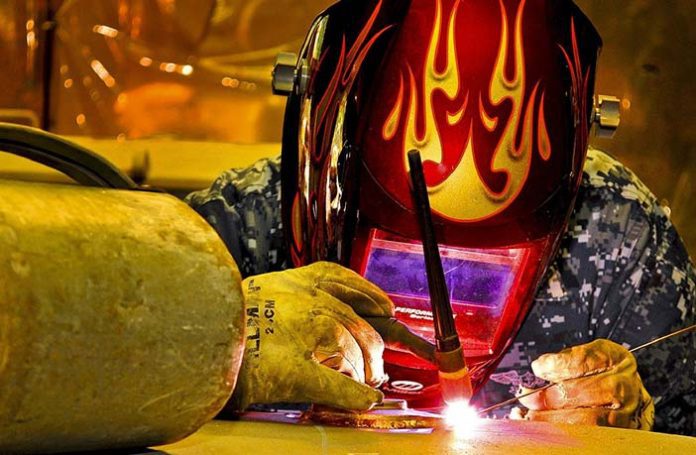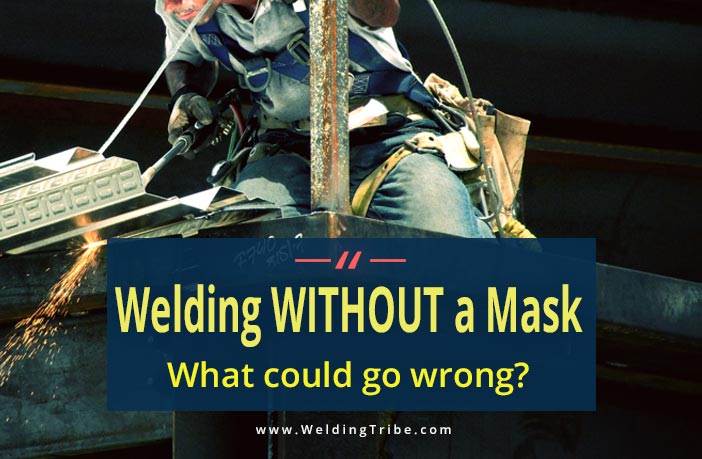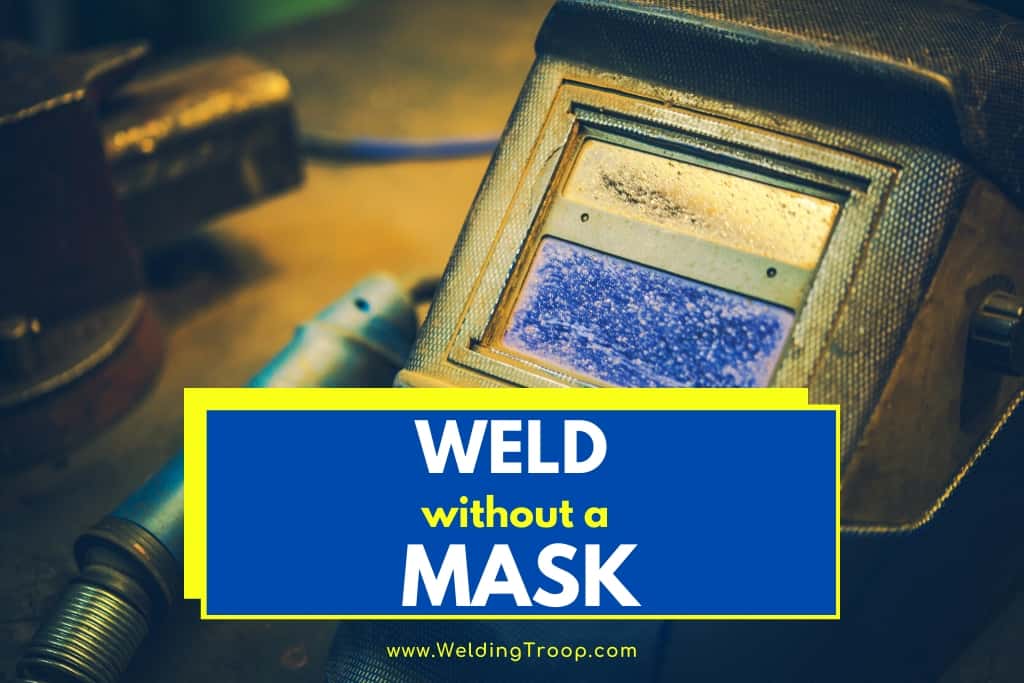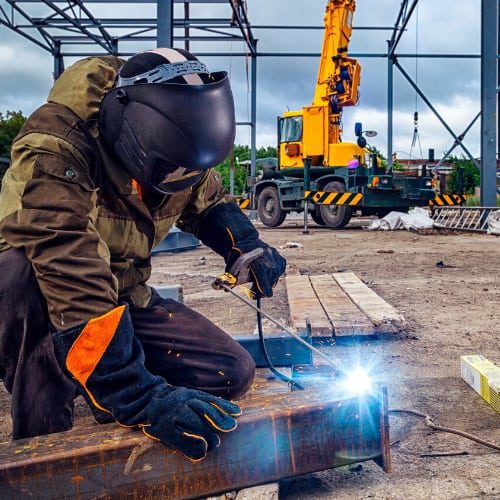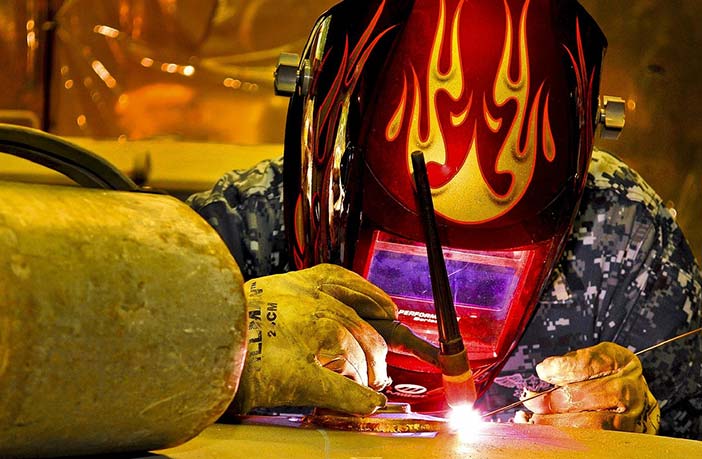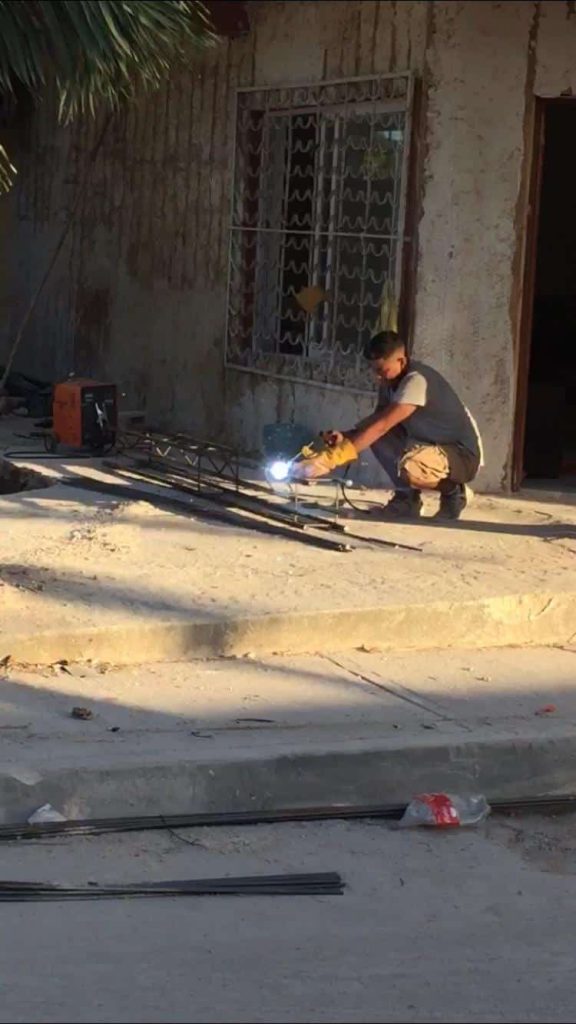You may not realize it, but wearing a welding mask is crucial.
Whether you’re a seasoned professional or just starting, protecting your eyes and face from the intense light and flying sparks is essential for your safety.
In this article, we’ll explore the importance of wearing a welding mask, the potential risks of not doing so, and some tips to ensure you stay protected and enjoy a long and fulfilling welding career.
So, before you strike that arc, let’s find out why a welding mask is a non-negotiable must-have!
Benefits of Welding Masks
Protection from Harmful Light
Welding masks offer essential protection from harmful light emitted during welding processes. When you engage in arc welding, a bright and intense light is generated, which includes ultraviolet (UV) and infrared (IR) rays.
These rays can be detrimental to your eyes and skin. However, wearing a welding mask creates a barrier between your sensitive organs and the harmful effects of these lights.
Prevention of Eye Damage
One of the primary benefits of using welding masks is preventing eye damage. The intense light produced during welding can cause a condition known as arc eye or welder’s flash.
This painful condition occurs when the retina experiences a burn due to unprotected exposure to the bright arc. Wearing a welding mask with the appropriate lens shade and UV/IR protection significantly reduces the risk of arc eye and preserves the health of your eyes.
Shielding from Sparks and Debris
Welding projects often involve the generation of sparks and the release of debris. These sparks and debris can land on your face, eyes, and skin without proper protection, leading to potential injuries.
By wearing a welding mask, you create a shield that effectively prevents sparks and debris from causing harm. This ensures your safety during welding and minimizes the risk of accidental injuries.
Types of Welding Masks
Auto-Darkening Helmets
Auto-darkening helmets are popular among welders due to their convenience and enhanced protection. These helmets are equipped with a unique lens that automatically adjusts its darkness level according to the intensity of the welding arc.
This means you no longer need to manually flip the lens up or down, as it darkens instantly when the welding process begins and returns to a clear state once the arc is extinguished. Auto-darkening helmets provide optimal eye and face protection while allowing welders to maintain focus and work efficiently.
Passive Welding Helmets
Passive welding helmets, or traditional welding helmets, are a reliable and cost-effective choice for welders. These helmets feature a fixed shade lens that provides consistent protection throughout the welding process.
While they lack the convenience of auto-darkening helmets, passive welding helmets are still highly effective in shielding your eyes and face from harmful light, sparks, and debris. They are a trusted option for welders who prefer a more traditional approach to eye protection.
Powered Air Purifying Respirators (PAPR)
Powered air-purifying respirators (PAPR) welding masks are a comprehensive solution for welders who require additional respiratory protection. In addition to offering eye and face protection, these masks incorporate a powered air system that filters out fumes, particles, and other contaminants from the air you breathe.
PAPR masks come with a battery-powered fan and a filter unit that supply clean air, ensuring welders are shielded from hazardous welding fumes while maintaining clear visibility.
Choosing the Right Welding Mask
Consider the Welding Process
When selecting a welding mask, it is crucial to consider the specific welding process you will be undertaking. Different welding processes may emit different levels of light intensity and require varying levels of protection.
For example, arc welding typically produces a higher light intensity than other processes. By understanding the unique requirements of your welding process, you can choose a mask that offers the appropriate level of protection and ensures your safety.
Evaluate the Safety Standards
Before purchasing a welding mask, evaluating its compliance with safety standards is essential. Welding masks that meet the safety standards specified by regulatory bodies such as the American National Standards Institute (ANSI) and the European Union (EU) assure quality and effectiveness.
Look for certifications, such as ANSI Z87.1 or EN 175, to ensure that your mask meets the safety requirements for optimal protection.
Evaluate Comfort and Fit
Welders often spend extended periods wearing their masks, so choosing a mask that offers both comfort and a secure fit is crucial. Too tight a mask can cause discomfort and make it difficult to work efficiently.
In contrast, an ill-fitting mask may compromise your safety. Look for masks with adjustable headbands and comfortable padding to ensure a personalized fit. Trying on different models or seeking recommendations from experienced welders can help you find the best mask for your needs.
Risks of Welding Without a Mask
Arc Eye and Flash Burns
Welding without a mask puts you at significant risk of arc eye and flash burns. When your eyes are exposed to the intense light produced during welding, such as from the electric arc, it can result in painful burns on the surface of your cornea.
These burns, also known as flash burns or welder’s flash, can lead to extreme pain, sensitivity to light, and even temporary vision loss. Protecting your eyes with a welding mask prevents these debilitating injuries.
Retinal Damage
The intense light generated during welding processes can cause long-term damage to your retina if proper eye protection is not utilized. Retinal damage occurs when the delicate tissue at the back of the eye is exposed to excessive ultraviolet (UV) and infrared (IR) radiation.
Prolonged exposure to these harmful rays without a welding mask can result in irreversible vision problems, such as macular degeneration or cataracts. Prioritizing a welding mask is essential for safeguarding your long-term eye health.
Skin Burns
In addition to eye damage, welding without a mask puts your facial skin at risk of burns. The sparks and intense heat generated during welding can cause severe burns on exposed skin, leading to pain, scarring, and potential infection.
By wearing a welding mask, you shield your entire face, ensuring that your skin remains protected from these welding-related risks.
Lung Irritation
Welding operations can release harmful gases, fumes, and particulates into the air, posing a risk to your respiratory health. Without the proper respiratory protection offered by a welding mask or a powered air purifying respirator (PAPR), you may inhale these hazardous substances, leading to lung irritation, respiratory distress, or even long-term lung diseases.
Avoiding these potential health complications is vital; wearing a welding mask with respiratory protection can significantly reduce this risk.
The Importance of Eye Protection
Vulnerability to Infrared and Ultraviolet Rays
Welding processes emit significant infrared (IR) and ultraviolet (UV) rays. These rays are invisible to the naked eye and can cause short-term and long-term eye damage.
UV rays, in particular, can penetrate the outer layers of the eye and damage the cornea, lens, and retina. Prolonged exposure without proper eye protection can lead to photokeratitis, cataracts, and blindness. Protecting your eyes with a welding mask is crucial to shield them from these harmful rays.
Protection from Particles and Fumes
Apart from harmful light, welding processes also produce particles, fumes, and debris that threaten your eyes. These particles can cause irritation, inflammation, or even severe eye damage if they come into direct contact.
The fumes released during welding also contain toxic substances, such as metal oxides, which can harm your eyes. Wearing a welding mask with adequate coverage ensures that these particles and fumes are kept away from your eyes, safeguarding them from potential harm.
Prevention of Eye Strain
Welding tasks often require prolonged focus and concentration, which can strain your eyes. Repeated exposure to the intense light and visual demands of welding can lead to eye fatigue and strain, causing symptoms such as dryness, redness, and headaches.
Wearing a welding mask reduces the strain on your eyes, allowing you to work comfortably and efficiently for extended periods without experiencing excessive eye fatigue.
Considerations for Welding Visibility
Lens Shade Selection
Proper lens shade selection is essential for maintaining optimal visibility during welding tasks. The lens shade refers to the darkness level of the welding mask’s lens, determining how much light is filtered out.
Different welding processes and material thicknesses require specific lens shades for clear visibility. Choosing an inappropriate lens shade can reduce visibility, making it challenging to perform the weld accurately. Refer to industry recommendations and welding standards, or consult experienced welders to determine the ideal lens shade for your specific welding applications.
Lens Reaction Time
For welders using auto-darkening helmets, the lens reaction time is a crucial factor to consider. The lens reaction time denotes how quickly the lens transitions from a transparent state to a darkened state upon exposure to the welding arc.
A faster reaction time ensures that your eyes are immediately protected from the intense light, while a slower reaction time may result in temporary exposure and potential eye damage. Look for auto-darkening helmets with fast and reliable lens reaction times to ensure optimal eye safety.
Evaluating the Amount of Light
Welding environments may vary in terms of the amount of light present. Some projects require high-intensity lighting, while others may involve low-light conditions. When choosing a welding mask, consider the lighting conditions you will be working in.
Masks with adjustable lens shades or variable darkening settings offer flexibility, allowing you to adapt to different lighting conditions and ensure adequate visibility throughout your welding tasks.
Common Welding Mask Maintenance
Cleanliness and Inspection
Regular maintenance and cleanliness of your welding mask are essential to ensure its proper functioning and longevity. After each use, inspect the mask for any damage or signs of wear and tear. Clean the lens and mask surfaces using non-abrasive materials to remove debris or contaminants.
Additionally, check the headgear components to ensure they are in good condition and properly adjusted. By maintaining cleanliness and conducting routine inspections, you can increase the lifespan of your welding mask and ensure reliable protection.
Lens Replacement
Over time, the lens of your welding mask may become scratched, discolored, or damaged, compromising its effectiveness. Replacing the lens when necessary is crucial to maintain clear visibility and appropriate protection.
Refer to the manufacturer’s instructions or guidelines for your specific welding mask model to learn how to safely and correctly replace the lens. By regularly replacing worn-out lenses, you can ensure that your mask provides optimal performance and safeguards your eyes during welding.
Headgear Adjustment
The headgear of your welding mask plays a significant role in achieving a comfortable and secure fit. Inspect the headgear regularly to ensure the straps, buckles, and adjustments work correctly. Make necessary adjustments to achieve a snug yet comfortable fit.
An ill-fitting mask can cause discomfort, reduce visibility, and compromise safety. By properly adjusting your welding mask’s headgear, you can focus on your welding tasks without discomfort or distractions.
Alternative Eye Protection Options
Safety Glasses with Side Shields
While welding masks provide comprehensive protection, safety glasses with side shields can serve as a valuable additional layer of eye protection. Safety glasses are lightweight and comfortable, making them a convenient choice for tasks that do not require full-face coverage.
The side shields offer extended peripheral protection, guarding your eyes from sparks and debris that may enter from the sides. Using safety glasses with a welding mask can enhance safety and reduce the risk of eye injuries.
Goggles
Goggles are another alternative option for eye protection during welding tasks. They offer full coverage of the eyes and provide a tight seal, protecting against sparks, debris, and harmful light.
Goggles are commonly used when working with intense light or performing intricate welding jobs requiring detailed visibility. Opting for goggles ensures comprehensive eye protection and maintains clear visibility without hindering your precision and accuracy.
Face Shields
Face shields can offer an additional protective layer for tasks involving extensive exposure to sparks, debris, or intense radiant heat. Face shields provide full-face coverage and a barrier against flying particles, splatters, and heat.
They offer a wide field of vision, allowing for clear visibility while safeguarding your entire face. Combining a face shield with other protective measures, such as a welding mask, creates a highly secure environment, minimizing the risk of injuries and ensuring your safety.
Legal Requirements for Welding Masks
Occupational Safety and Health Administration (OSHA) Standards
The Occupational Safety and Health Administration (OSHA) sets forth regulations and standards to ensure the safety of workers in various industries, including welding. These standards require employers to provide suitable eye and face protection for employees engaged in welding operations.
Compliance with OSHA standards is necessary for legal purposes and for protecting workers’ health and well-being. Ensure that the welding mask you choose meets the requirements outlined by OSHA to ensure your legal compliance and personal safety.
Industry-Specific Regulations
In addition to OSHA standards, specific industries and professional organizations may have regulations on welding safety and protective equipment use industry-specific regulations aim to address specific welding applications’ unique risks and considerations.
It is essential to familiarize yourself with any regulations or guidelines relevant to your industry to ensure that your welding mask meets the requirements and provides adequate protection. By adhering to general and industry-specific regulations, you prioritize safety and maintain compliance within your field.
Conclusion
Welding masks are indispensable for welders, providing crucial protection from harmful light, preventing eye damage, and shielding against sparks and debris. The different types of welding masks, such as auto-darkening helmets, passive welding helmets, and powered air-purifying respirators (PAPR), offer varying features and levels of protection, allowing welders to choose the most suitable option for their needs.
When selecting a welding mask, considering the welding process, evaluating safety standards, and ensuring comfort and fit are essential to making an informed decision.
The risks associated with welding without a mask, including arc eye, retinal damage, skin burns, and lung irritation, highlight the importance of eye protection. Welding masks protect welders from infrared and ultraviolet rays, prevent exposure to particles and fumes, and aid in preventing eye strain during prolonged welding tasks. Factors for welding visibility, including lens shade selection, lens reaction time, and evaluating the amount of light, contribute to ensuring clear visibility and accurate welding performance.
Regular maintenance practices such as cleanliness, inspection, lens replacement, and headgear adjustment are vital to maintain the effectiveness of welding masks. Additionally, alternative eye protection options, including safety glasses with side shields, goggles, and face shields, can be used with welding masks for enhanced eye protection during specific welding tasks.
Adhering to legal requirements, such as those set by the Occupational Safety and Health Administration (OSHA) and industry-specific regulations, ensures compliance and prioritizes worker safety.
In conclusion, the numerous benefits of welding masks and their essential role in protecting welders from potential hazards emphasize the importance of investing in a suitable welding mask and utilizing it as a crucial piece of personal protective equipment for welding operations.


